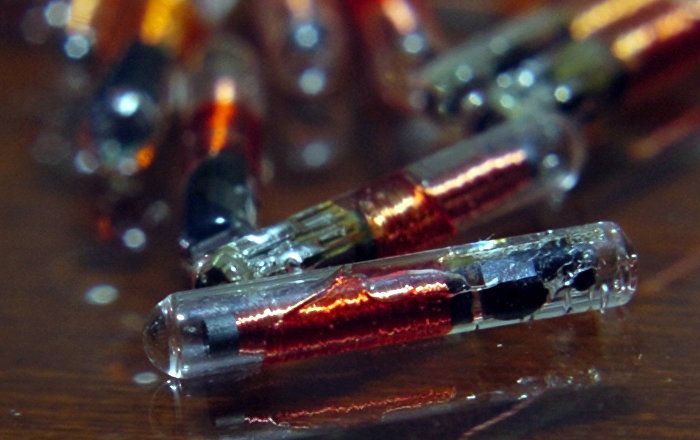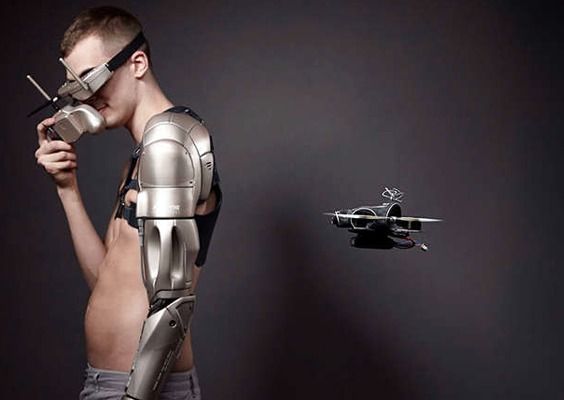Transhuman Terminology.
ADHOCRACY
AEONOMICS
A-LIFE
AGORIC SYSTEM
AI-COMPLETE ALEPH ALGERNON AMORTALIST ARACHNIOGRAPHY ARCH-ANARCHY ARCOLOGY ARROW IMPOSSIBILITY THEOREM ARTILECT ASEX ASIMORT ASIMOV ASSEMBLER ATHANASIA ATHANOPHY ATHEOSIS AUGMENT AUTOEVOLUTIONIST AUTOMATED ENGINEERING AUTOMORPHISM AUTOPOTENT AUTOSCIENT BABY UNIVERSE BASEMENT UNIVERSE BEAN DIP CATASTROPHE BEANSTALK BEKENSTEIN BOUND BERSERKER BETELGEUSE-BRAIN BIG CRUNCH BINERATOR BIOCHAUVINISM BIOLOGICAL FUNDAMENTALISM BIONICS BIONOMICS BIOPHILIAC BIOSTASIS B-LIFE BLIGHT BLIND UPLOADING BLUE GOO BOGOSITY FILTER BORGANISM BREAKEVEN POINT BROADCATCHING BRUTE FORCE UPLOADING BUSH ROBOT CALCUTTA SYNDROME CALM TECHNOLOGY CALORIE RESTRICTION CASIMIR EFFECT CEREBROSTHESIS CHINESE ROOM CHRONONAUTS CHURCH-TURING THESIS COBOTS COMPUFORM COMPUTRONIUM CONCENTRATED INTELLIGENCE CONSILIENCE CONNECTIONISM CONTELLIGENCE CONTINUITY IDENTITY THEORY COSMYTHOLOGY CRYOBIOLOGY CRYOCRASTINATE CRYOGENICS CRYONICS CRYONIC SUSPENSION CRYPTO ANARCHY CRYPTOCOSMOLOGY CYBERCIDE CYBERFICTION CYBERGNOSTICISM CYBERIAN CYBERNATE/CYBERNIZE CYBERSPACE/CYBERMATRIX CYBRARIAN CYPHERPUNK DEANIMALIZE DEATH FORWARD DEATHISM DEEP ANARCHY DEFLESH DIGITAL PSEUDONYM DIAMONDOID DISASSEMBLER DISASTERBATION DISTRIBUTED INTELLIGENCE DIVERGENT TRACK HYPOTHESIS DIVERSITY IQ DIVIDUALS DOOMSDAY ARGUMENT DOWNLOAD DRYWARE DUBIFIER DYSON SPHERE ECOCALYPSE ECTOGENESIS
EMBRYOMEME
EMULATION
ENHANCED REALITY
ENVIROCAPITALISM
EPHEMERALISTS
E-PRIME
ESCALATORLOGY
THE ETERNAL LIFE POSTULATE
EUPSYCHIA
EUTHENICS
EVOLUTIONARILY STABLE STRATEGY (ESS)
EVOLUTURE
EXCONOMICS
EXES
EXFORMATION
EXISTENTIAL TECHNOLOGY
EXOPHOBIA
EXOSELF
EXTROPIAN
EXTROPIATE
EXTROPIC
EXTROPOLIS
EXTROPY
FACULTATIVE ANAGOROBE
FAR EDGE PARTY
THE FERMI PARADOX
FEMTOTECHNOLOGY
FLATLANDER
FLUIDENTITY
FOGLET
FORK
FREDKIN’S PARADOX
FUNCTIONAL SOUP
FUTIQUE
FUTURE SHOCK
GALAXY BRAIN
GAUSSIAN
GENEGENEERING
GENETIC ALGORITHM
GENIE
GREEN GOO
GÖDEL’S THEOREM
GOLDEN GOO
GREAT FILTER, THE
GREY GOO
GUY FAWKES SCENARIO
HALLUCINOMEMIC
HIVE COMPUTING
HOMORPH
HPLD
HYPERTEXT
HYPONEIRIA
HYPOTECH
IDEAL IDENTITY
IMMORTALIST
IMMORTECHNICS
IMP
INACTIVATE
INFOGLUT
INFOMORPH
INFORMATION-THEORETICAL DEATH
INLINE UNIVERSITIES
INTERFACER
INTERNALNET
JUPITER-BRAIN
KHAKI GOO
KARDASCHEV TYPES
KNOWBOTS
KOLMOGOROV COMPELXITY
LEONARDO DA VINCI SYNDROME
LINDE SCENARIO
LIQUIDENTITY
LOFSTROM LOOP
LONGEVIST
MASPAR
MATAGLAP
MEGATECHNOLOGY (or MEGASCALE ENGINEERING)
MEMETICS
MEMIE
MEMIUS
MEMOTYPE
MEMOID (or MEMEOID)
MEHUM
MERCHANCY
MESOSCALE
MINDKIND
MOLMAC
MORPHOLOGICAL FREEDOM
MUTUAL REALITY
NANARCHIST
NANARCHY
NANITE
NANOCHONDRIA
NANOFACTURE
NANOMEDICINE
NANOSOME
NANOTECH
(MOLECULAR) NANOTECHNOLOGY
NEG
NEOMORPH
NEOLOGOMANIA
NEOPHILE
NEOPHILIA
NEOPHOBE
NEUROCOMPUTATION
NEURONAUT
NEURON STAR
NEUROPROSTHESIS
NEUROSUSPENSION
NOOTROPIC
NOW SHOCK
NUTRACEUTICAL
OFFLOADING
OMEGA POINT
OMEGON
OMNESCIENCE
O’NEILL COLONY
O’NEILL CYLINDERS
ONTOLOGICAL CONSERVATIVES
OPTIMAL PERSONA
PANCRITICAL RATIONALISM
ORBITAL TOWER
PARTIALATE
PATTERN IDENTITY THEORY
PERICOMPUTER
PERIMELASMA
PERSOGATE
PERVERSION ATTACK
PHARMING
PHYLE
PHYSICAL ESCHATOLOGY
PICO TECHNOLOGY
PIDGIN BRAIN
PINK GOO
PLEXURE
POME
POSTHUMAN
POSTJUDICE
POWERSHIFT
PRISONERS’ DILEMMA
PRIVACY MANAGEMENT
PROLONGEVITY
QUANTUM COMPUTING
QUANTUM CRYPTOGRAPHY
QUASISPECIES
RAPTURE OF THE FUTURE
RED GOO
RED QUEEN PRINCIPLE
RED QUEENED
REMEMBRANCE AGENT
REVERSIBLE
RIF
SANS CEILING HYPOTHESIS
SANTA MACHINE
SAPPER MEME
SCHEME
SENTIENCE QUOTIENT
SHIH
SINGULARITY
SINGULARITARIAN
SKY HOOK
SMART-FACED
SOCIOTYPE
SOLID STATE CIVILIZATION
SPIKE, THE
SPOCK MEME
SPONTANEOUS VOLUNTARISM
SPACE FOUNTAIN
STAR LIFTING
STELLAR HUSBANDRY
STEWARD
STRONG AI POSTULATE
STRONG CONVERGENCE HYPOTHESIS
SUSPENDED ANIMATION
SYNTHESPIAN
TAZ/Temporary Autonomous Zone.
TECHNOCYTE
TECHNOSPHERE
TECHNOCALYPS
TELEOLOGICAL THREAD
THEORETICAL APPLIED SCIENCE
TITHONUS SYNDROME
TIPLER CYLINDER
TIPLERITE
TRANSBIOMORPHOSIS (TRANSBIOLOGICAL METAMORPHOSIS)
TRANSCEND
TRANSCENSION
TRANSCIENT
TRANSCLUSION
TRANSHUMANISM
TRANSHUMANITIES
TRAPDOOR FUNCTION
TURING MACHINE
TURING TEST
ÜBERGOO
UBIQUITOUS COMPUTING
UPLIFT
UPLOADER
UNIVERSAL CONSTRUCTOR
UNIVERSAL IMMORTALISM
UNIVERSAL TURING MACHINE
UTILITY FOG
VACCIME
VASTEN
VENTURISM
VIEWQUAKE
VIRIAN
VIRION
VIRTUAL COMMUNITY
VIRTUAL RIGHTS
VITOLOGY
VIVISYSTEM
VON NEUMANN MACHINE
VON NEUMANN PROBE
WEBORIZE
WETWARE
WORMHOLE
XENOBIOLOGY
XENOEVOLUTURE
XEROPHILIA
XOXER
ZERO KNOWLEDGE PROOF
This may not be the best possible neologism for this sort of entity, but I think it’s a good idea on principle to generate neologisms. They are good for us and solidify our thinking. Bruce Sterling, Speech at Lifelike Computer Characters ‘95.





